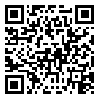
Maremat & Me'mari-e Iran
Art University of Isfahan

year 14, Issue 37 (4-2024)
mmi 2024, 14(37): 53-82 |
Back to browse issues page
Download citation:
BibTeX | RIS | EndNote | Medlars | ProCite | Reference Manager | RefWorks
Send citation to:



BibTeX | RIS | EndNote | Medlars | ProCite | Reference Manager | RefWorks
Send citation to:
Lorzangeneh M, Talebi Varnosfaderani A, Shahivandi A. The effects of tangible and intangible physical variables on the structure of neighborhoods in historical cores (Case study: Seyed Mahmoud neighborhood on Dezful). mmi 2024; 14 (37) : 4
URL: http://mmi.aui.ac.ir/article-1-1424-en.html
URL: http://mmi.aui.ac.ir/article-1-1424-en.html
1- Art University of Isfahan
2- Art University of Isfahan ,talebi.af@gmail.com
2- Art University of Isfahan ,
Abstract: (9216 Views)
Historical contexts in urban literature are valuable foundations that carry the values of previous generations and the country's heritage, which requires a scientific approach to facilitate the development of this part of the city and use new methods and tools. Understanding urban neighborhoods' spatial and physical structure, especially historical and decayed neighborhoods, will help us effectively prepare future urban development plans. Thus, this study aimed to explain the role of physical components and space syntax within historical contexts through a descriptive-analytical approach. To achieve this goal, after studying the relevant theoretical foundations, Autocad, Depthmap, and GIS software were used to generate the maps, and the structural equation model and Amos Graphic 22 software were used to analyze the data. This analytical method reveals the impact of a far greater number of tangible physical, with a regression weight of 0.707. Among the tangible physical variables, the passage width with a regression weight of 0.630, and the enclosure with a regression weight of 0.604 have both achieved the highest ranking. among the variables of the intangible physical component, space syntax with a regression weight of 0.621 has a higher weight than the rest of the factors, and among the factors of this component, "space connection" with a regression weight of 0.878 has a higher weight. One thing worth noting is that there is a significant relationship between the depth of space and the choice of path and space since the greater the depth of space and its blind spots are, the fewer paths and spaces to choose from. Moreover, contrary to popular belief, the length of passages has little impact on neighborhood dynamics.
Article number: 4
Keywords: Historical core, Physical variables, space syntax, Structural equation modeling, Seyed Mahmoud neighborhood
Type of Study: Research original/ Regular Article |
Subject:
معماري و شهرسازي
Send email to the article author
| Rights and permissions | |
 |
This work is licensed under a Creative Commons Attribution-NonCommercial 4.0 International License. |



